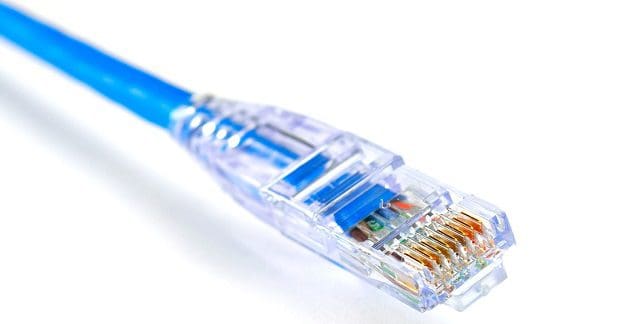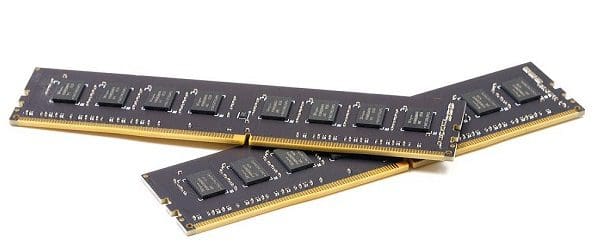Computers and routers are required for any computer network. They generate and propagate network traffic, respectively. However, none of that is possible without some form of communication medium. Wi-Fi is the dominant standard in the wireless space, at least for home and enterprise networking.
Wireless networking can be very convenient for use with devices that need to be able to move while connected. This isn’t the case for all devices, though. Desktop computers are rarely moved, and even then, they are not used while being moved. While they can be networked via Wi-Fi, there is a better option.
Wireless networking has to deal with signal degradation due to obstructions such as walls. It also acts as a single broadcast domain, meaning all devices receive all network traffic and choose to ignore that traffic not aimed at them. A wired network doesn’t necessarily have to deal with these issues. The only downside is that connected devices must be physically cabled into the network. This is fine for desktop computers and generally acceptable for laptops, but it is a killer for mobile phones.
The dominant standard for wired networks is called Ethernet. It is used in home networks, enterprise networks, supercomputer systems, and automotive devices. Ethernet standards are currently available for network speeds of up to 40Gb/s.
Note: Network speeds are typically listed in units of megabits per second or gigabits per second. This is distinct from megabytes and gigabytes. Bytes are made out of 8 bits, so it takes 8 seconds for a megabit connection to transfer a megabyte. Units using bytes are always denoted with a capital “B.” Bits, the smaller unit, use a lowercase “b.”
Origins
Ethernet was first developed in the mid-1970s at Xerox PARC. The original design had a bandwidth of 2.94Mb/s. This was then upgraded to 10Mb/s, the speed at which Ethernet was first commercialized in 1980. IEEE also standardized it as 802.3 in 1983. The early 10BASE5 standard used “thick” coaxial cable, which was relatively expensive. 10BASE2 was standardized in 1985 using thinner, cheaper coaxial cabling to reduce implementation costs. This cost reduction was significant as most buildings only had the twisted pair cabling used for telephony and needed to run the coaxial cables from scratch.
Tip: The XBASE-X notation is somewhat clumsy but has some logic. The first number indicates the class of network speed. For example, 10BASE5 has a 10Mb/s class network speed. The second X is slightly more loosely used but generally notates the cable type. The 10BASE2 cable is narrower than the 10BASE5 cable. 100BASET uses a twisted pair cable rather than coaxial.
In 1987 the 1BASE5 standard offered the first version of Ethernet to use twisted pair cabling. While a commercial failure, this standard set the basis for future developments. In 1990 10BASE-T was standardized. It was trendy thanks to its speed and support for existing cable infrastructure.
Switch to Twisted Pair
While one of the main reasons for the switch from coaxial cable to twisted pair was that twisted pair cabling was already widely implemented, it wasn’t the only reason for its success. The coaxial cable standards were essentially one shared cable. All other devices’ transmissions from any device were seen, though the network cards were supposed to drop traffic not meant for their device.
This meant that all hosts shared the bandwidth and that one issue could affect the whole network. Signal collisions in the network meant that the colliding frames needed to be retransmitted.
Twisted pair cabling allowed a switch to the star topology, where each device had its dedicated link to the router or a switch. The collision domain was shortened from the entire network to each link. It also allowed two devices to communicate at peak network speeds while not consuming all the bandwidth for other devices.
This design choice allowed speeds to be increased further, for more extensive networks to be possible, and for longer cable lengths to be possible. Twisted pair cabling is still used for electrical ethernet cables, though standards exist for fibreoptic connections too.
Other Standards
Ethernet is a broad conglomeration of standards required to make the whole thing work. The types of cables are standardized, physical connectors, signaling methods, collision handling, and addressing. For example, cables are standardized into categories based on bandwidth for the length of the cable. The exact specifics, such as shielding and materials, are left up to the manufacturer. This means that while the standards may list a maximum cable run of 100m, a high-quality cable may be able to operate over longer distances.
Physical connectors are well standardized, with the 8P8C connector being the near-universal ethernet connector. Some variants are offered, including one for use in harsh environments and one designed for fiber optic connections. The 8P8C connector has eight pins, of which speeds at and below 100BASETX only use 4.
This allows the other four cables to be optionally used to provide power, in a standard called Power over Ethernet or PoE. The main downside of the connector is the flimsy locking tab which is relatively easy to break and, once broken, can leave the cable unreliably loose.
Standardized signaling methods include standard voltage levels, the number of twisted pairs in a cable, the wavelength of the laser used, the use of single or multi-mode fiber, and the use of half- or full-duplex. Ethernet uses 48-bit MAC addresses to route network traffic. This method is so well standardized that some other technologies use it and are inter-compatible, including Wi-Fi and Wi-Max.
Current Usage
Most home networks that use a cabled connection will use a Cat5e cable, capable of transmitting up to 2.5GBASE-T. However, most home networks will likely operate on FastEthernet (100BASE-TX) or gigabit ethernet (1000BASE-T), which Cat5e is more than capable of handling.
Tip: That’s 2.5Gb/s, 100Mb/s and 1000Mb/s respectively.
40GBASE-T is the current fastest ethernet standard with speeds of 40Gb/s. This was only standardized in 2016 and offers data speeds only really usable in enterprise data center environments, so it isn’t that widely used yet. Additionally, 40GBASE-T requires a Cat8 cable to provide sufficient bandwidth.
Conclusion
Ethernet is a collection of standards mostly directly recognizable by the ethernet cable. Ethernet cables come in classes, with Cat5e being the primary standard for end users as it supports bandwidths of up to 2.5Gb/s. The standards not only define how to physically connect devices over a network but also how to transfer data. Ethernet is the dominant wired networking standard.




helpful task. additional knowledge to us.